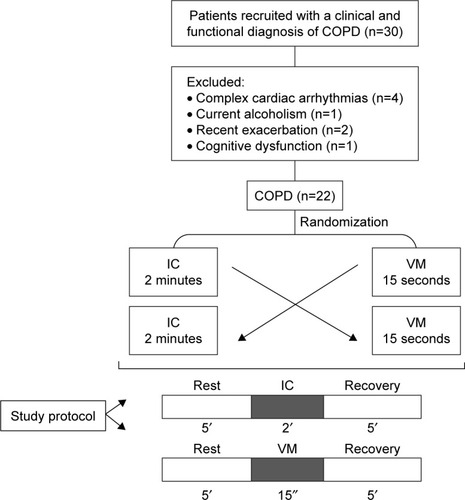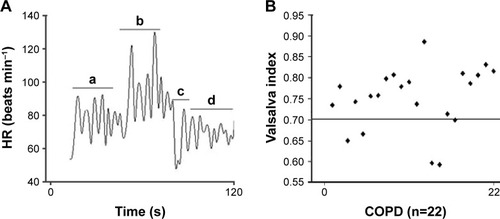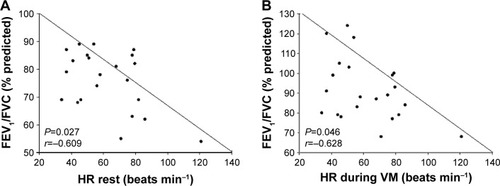Figures & data
Figure 1 Flowchart – sampling and study phases.
Abbreviations: n, number of patients; IC, isometric contraction; VM, Valsalva maneuver.

Table 1 COPD patients’ clinical characteristics
Table 2 Clinical and HRV parameters at rest, during IC and during recovery
Figure 2 Relationship between respiratory muscle strength and lung function, and heart rate variability index during upper limb isometric contraction.
Abbreviations: RMSSD, square root of the mean squared differences of successive RR intervals; FEV1, forced expiratory volume in 1 second; mean HR, mean heart rate; FVC, forced vital capacity; HF, high frequency; nu, normalized units; MIP, maximum inspiratory pressure; cmH2O, centimeters of water.

Table 3 Results of multiple linear regression to determine the influence of FEV1 and FVC on mean HR during upper limb isometric contraction
Figure 3 Response of HR during the VM in COPD patients.
Abbreviations: ANS, autonomic nervous system; HR, heart rate; VM, Valsalva maneuver; VI, Valsalva index.

Figure 4 HR values during the VM.
Abbreviations: HR, heart rate; VM, Valsalva maneuver; ANOVA, analysis of variance.

Figure 5 Relationship between lung function and HR values during the VM in COPD patients.
Abbreviations: HR, heart rate; VM, Valsalva maneuver; FEV1, forced expiratory volume in 1 second; FVC, forced vital capacity.

